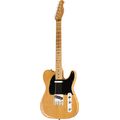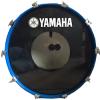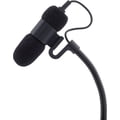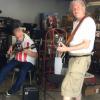The Super Duper EQ Cheat Sheet for Everyone
Page 1 of 2: 12
Member
Posts: 111
Joined: 11 lug 2015
This is in reply to a few posts. It is basically from the Angry Soundguys website: http://blog.sonicbids.com/the-ultimate-eq-cheat-sheet-for-every-common-instrument
Ive tweaked it for my own use, but for the most part its helped alot.I usually keep a notebook but these were my starting point while learning. Hope you enjoy!
Four Tips:
1.250hz.....drop it low always. Gets rid of mix mud.Usually dropping increments of -3db and listening is a smart thing to do.
2.anything below 40 hz.....usually an enemy... unless rap or house music. I usually take the track and cut low end around 60 hz as it doesnt have bass yet. When I add the bass everything below 40hz is then killed. By doing that, I cut a hole in the mix for my bass without changing everyone elses sound.
3.If you have two instruments in the same range...panning becomes your friend.
4.If everything sounds great to begin with...Subtractive EQing is where you want to go. You are cutting not adding to the mix flat eq.
Happy Recording!
Drums
Kick
While the snare may arguably be the most vocal drum in the kit, the kick has an amazing array of possibilities for tonal shaping. In many ways, I think you can really measure an engineer/mixer's abilities on how a kick sounds and how it sits in the mix.
40 to 60 Hz - Bottom: The tone of the reverberation in the shell, sometimes too rumbly, can be undefined/indeterminate depending on the mic'ing/speakers
60 to 100 Hz - Thump: The "punch you in the chest" range of the kick
100 to 200 Hz - Body: This is the "meat," if you will, of the kick sound
200 to 2,000 Hz - Ring/Hollowness: This large band is where you can often find issues with ringing and muddy kick sounds
2,000 to 4,000 Hz - Beater Attack: This is the range to look for the "thwack" sound of the beater, critical for getting that "basketball bouncing" kick sound
Snare
200 to 400 Hz - Body/Bottom: The central fundamental of most snares tends to live somewhere in this range
400 to 800 Hz - Ring: This is the range that tends to give that hollow "ring" to a snare tone that's often undesirable. Crush this range too much, though, and your snare will start to lose some life and sound two-dimensional in the mix
2,000 to 4,000 Hz - Attack: The stick on head "crack" is often found around 8,000 Hz (Sizzle and Snap). The overtone sound of the snares themselves can either be accented or dampened somewhere around this point
Toms
100 to 300 Hz - Body: Depends on tuning, but a good place to look for the "boom" of a tom sound. Too much and things will sound, well, "boomy." Remove too much, and your toms will sound like cardboard boxes
3,000 to 4,000 Hz - Attack: Just as it sounds, this is the the attack of the drum itself from a stick on its head
Cymbals
200 to 300 Hz - Clank: Here's where, especially on your hi-hats, the "chink" sound of the cymbal lives. As always, season to taste
6,000 Hz and up - Sizzle: This range is where the "tssssssss" part of the cymbals can be brightened up to add some more life and "air" to a cymbal wash, or you can spontaneously start bleeding from the ears if used without prejudice
Synth "Kick" (808)
Ah yes, the 808. It's often used and referred to as a kick, but it tends to act more as a very low tom, as it has a pitch. This thing is the Loch Ness Monster – there tends to be more under the water. The best way to deal with a true, clean 808 sample is to work around it. It's usually best to let the 808 do its thing and to get the bottom end around it the hell out of the way. If it's a fuzzy sample or has been driven and squashed, you may need to play with things above 250 Hz, but usually live and let live is the best approach.
Bass
The reason the kick and the bass tend to be mortal enemies in many mixes is they can literally occupy identical sonic space from a frequency perspective. So before reaching in with any EQ, listen to both and decide where one will take the lead over the other, and in which ranges.
40 to 80 Hz - Bottom: Especially with five-string variations, this is where the bottom resonances of most basses live...GET RID OF EVERYTHING UNDER 40 except for RAP, HOUSE...etc...
80 to 200 Hz - Fundamentals: The primary fundamental of the bass. Right around 180 to 200 Hz is where you can try to cut in on a bass that is too "boomy" to clean it up while preserving fundamentals
200 to 600 Hz - Overtones: These are the upper harmonics of most bass tones, depending on the sound you're interested in. If you're having trouble getting a bass to cut through in a mix, especially a low-end heavy one or one that's getting played back on smaller speakers, this can be where to look
300 to 500 Hz - Wood: Particularly in upright basses, it's that distinctive, woody bark
800 to 1,600k Hz - Bite: The growl and attack of most basses can be either emphasized or toned down around here
2,000 to 5,000 Hz - String noise: Pretty straightforward here, I think
Guitar
Acoustic
120 to 200 Hz - Boom/Body: This is where you'll find most of the explosive low end on a mic'd acoustic that tends to feedback in the live world or be disruptive in the studio. A little bit here adds warmth and fullness on a solo performance, but in a dense band mix, it's probably better to get it out of the way
200 to 400 Hz - Thickness/Wood: This is the main "body" of most acoustic tones. Too many cuts here, and you're going to lose the life of the guitar somewhat
2,000 Hz - Definition/Harshness: This double-edged sword band will give the definition to the acoustic tone to hear intricacies in chords and picking, but too much will make it harsh and aggressive
7,000 Hz - Air/Sparkle: A touch, and I mean a touch, of a shelf boost here can help open up an acoustic sound
A note on acoustic guitar pickups (piezo, in particular): Making crazy 10 dB cuts? Contemplating making some absurd boost? You're probably not wrong – the acoustic pickup world can be the Wild West when it comes to tone. Some are great, and some are downright questionable. There are too many variables to even begin suggesting frequencies, so use your ears to guide you home on this one.
Electric
In general, I find a light hand with broad strokes to be most effective on electric guitar, if any EQ is applied at all other than some filtering. If you do decide to go hunting, however:
80 to 90 Hz and below - Mud: Lose it, crush it with your HP filter. There's pretty much nothing useful down here, and it will almost always just equate to flabbiness and noise in your tone
150 to 200 Hz - Thickness: This is where the "guts" of a guitar normally come from, but again, can quickly cloud a mix on you. Use sparingly, perhaps automate to add sweetness to a solo section or an exposed part, and then tuck it away when things thicken up again
300 to 1,000 Hz - Life: I call this the "life" of the electric, as many of the things that make an electric sound like an electric live in this range. So attenuating needs to be taken into consideration carefully. Too much though, and you start fighting with your snare and things like that, so take note
1,000 to 2,000 Hz - Honk: This is where honky and harsh characteristics can usually be smoothed out with a wide cut centered somewhere in this range
3,000 to 8,000 Hz - Brilliance and Presence: This is the range that can add shimmer or allow a guitar to cut through a mix when boosted. It can also be where you make cuts to keep a guitar from conflicting with a vocal. If making boosts in this range, keep an eye (ear?) out for noise, as any noise present from distortion/effects pedals will very quickly be accentuated as well
Keyboards
Piano
When looking at acoustic pianos, there are so many variations that can lead to differences in tone: upright vs. grand, hammer types, mechanical condition, the player, mic choices, and mic techniques. No matter what, though, the piano tends to be a behemoth in the mix – for better or worse – so most often you'll be looking to cut holes out for other things in your mix.
100 to 200 Hz - Boom: This can be a great place to add a little warmth to a solo piano in a studio environment, but more often than not will be the first place to cut some of the girth in a piano in a mix or help reduce feedback potential in a live situation
3,000 Hz and above - Presence: Adding a little "air" here can be great to brighten up a dark piano tone, depending on mic placement. Be careful not to bring out the noise of dampers on strings (particularly in the 3,000 to 5,000 Hz range), as this can quickly become distracting and jarring
Electric Piano (Rhodes)
If we're dealing with a real electric piano over a sample, things can be very situational as amp, mic'ing, and condition of the instrument itself can play such a huge role.
100 to 200 Hz - Boom: As with its acoustic counterpart, the low end can go from lush to overgrown Jurassic underbrush quickly. Particularly with the rich, dense harmonics of something like a Rhodes, cutting "mud" is usually your first order of business
800 to 1,000 Hz - Bark: Managing the "bark" and damper noise can sometimes be an issue, but if things are cutting through too much, odds are it's somewhere in this range
Clavinet
Honestly, I find myself treating this similarly to electric guitar, which is fitting considering the method of sound production. There are some idiosyncrasies to navigate with the attack that set it apart from its shoulder-slung brethren, but many of the same principles apply.
Organ (B3)
Much of a B3's magic comes from good mic placement and the player (the right drawbar settings are game changers). EQ should be applied sparingly and mainly as a corrective measure. Usually it's good to look to anything clashing with the bass (80 to 180 Hz), and if it's feeling a little "chubby" in the middle and either can't get out of its own way or doesn't play nice with other mid-heavy instruments or guitars, look to make cuts somewhere between 300 to 500 Hz.
Synths
While the near-infinite possibilities in the synth world can make this a hard one to generalize, there are some places you may start to look:
400 to 600 Hz - Thickness: Many synth sounds can get kind of muddy in this range and mess with the clarity of the sound itself, especially when you start layering multiple synths. Searching somewhere in this range is a good place to start
1,000 to 2,000 Hz - Cut/Bite: This is where you can usually find the attributes of a synth patch that are going to help it poke through the mix. Cut here to help tuck something back and out of the way, from guitars to vocals
3,000 to 4,000 Hz - Presence/Clarity: Also like voice and guitar, this range helps add excitement to a sound. And also like just about everything else mentioned here, too much of a good thing can be painful
Horns
Saxes
300 to 400 Hz - Honk/Woof: This somewhat depends on what type of sax we're dealing with, soprano to baritone. As we go lower, this point is also going to move lower
1,000 to 2,000 Hz - Squawk: Again, the type of sax itself may cause this point to float a little more, but you can cut the "parrot on a 'roid-rage bender" tendency of some instruments here
6,000 Hz - Reed noise: As saxes generate sound from a thin piece of wood vibrating in an air stream, there's a noise that sometimes accompanies this. Right around this point is where to start looking for that vibration
Brass
This can be applied to all brass in general, but particularly with trumpet and trombone in mind.
100 to 200 Hz - Boom/Mud: This is particularly pointing at the trombone, as it sometimes shares the range of the bass and the rest of the rhythm section, but rarely functions in that purpose. Getting it out of the way is usually best, as this range will serve little except to cloud most mixes
4,000 to 10,000 Hz - Brightness: This top end can brighten up a dark horn section. However, trumpets can nearly take someone's head off in this range with a good blat, so managing this band is key here
Vocals
The human voice: simultaneously one of the most fickle and yet most important pieces of any mix. Male voices, though typically lower than female, are actually more complex in their overtone structure, meaning that at least equal attention needs to be paid to the high end of a male vocal as a female.
100 Hz and below - Rumble: For most vocals, all you'll find down here is mic-handling noise, stage/floor vibrations, air conditioners, etc. Get rid of it
200 Hz - Boom: This frequency is usually where you'll find the "head cold" sound. The female voice may run a little higher, but this is the ballpark. Anyone with allergies or sinus issues knows exactly what I'm talking about
800 to 1,000 Hz - Word Clarity/Nasality: Not enough and intelligibility of some lyrics may be unintelligible, too much and you get the teacher from Peanuts
3,000 Hz- Presence/Excitement: This is right around the point that tends to add some energy, or some "buzz" to a vocal. Not enough, and the vocal may sound deflated, flat, and dull. Too much, and your listener will feel like he or she is getting poked in the ear canal with a chopstick every time the vocalist opens his or her mouth
4,000 to 8,000 Hz - Sizzle/Sibilants: Typically this is the range a de-esser is handling. If your vocalist sounds like meat hitting a hot pan at the end of any word ending in "s" or a similar sound, this is where to hunt
10,000 Hz and up - Air: Want to "open up" your vocal a little? Apply a light shelf boost around here and that should do it. This is not always necessary, though, and simply adding "air" for the sake of it can make things harsh, brittle, and introduce noise to the sound
Ive tweaked it for my own use, but for the most part its helped alot.I usually keep a notebook but these were my starting point while learning. Hope you enjoy!
Four Tips:
1.250hz.....drop it low always. Gets rid of mix mud.Usually dropping increments of -3db and listening is a smart thing to do.
2.anything below 40 hz.....usually an enemy... unless rap or house music. I usually take the track and cut low end around 60 hz as it doesnt have bass yet. When I add the bass everything below 40hz is then killed. By doing that, I cut a hole in the mix for my bass without changing everyone elses sound.
3.If you have two instruments in the same range...panning becomes your friend.
4.If everything sounds great to begin with...Subtractive EQing is where you want to go. You are cutting not adding to the mix flat eq.
Happy Recording!
Drums
Kick
While the snare may arguably be the most vocal drum in the kit, the kick has an amazing array of possibilities for tonal shaping. In many ways, I think you can really measure an engineer/mixer's abilities on how a kick sounds and how it sits in the mix.
40 to 60 Hz - Bottom: The tone of the reverberation in the shell, sometimes too rumbly, can be undefined/indeterminate depending on the mic'ing/speakers
60 to 100 Hz - Thump: The "punch you in the chest" range of the kick
100 to 200 Hz - Body: This is the "meat," if you will, of the kick sound
200 to 2,000 Hz - Ring/Hollowness: This large band is where you can often find issues with ringing and muddy kick sounds
2,000 to 4,000 Hz - Beater Attack: This is the range to look for the "thwack" sound of the beater, critical for getting that "basketball bouncing" kick sound
Snare
200 to 400 Hz - Body/Bottom: The central fundamental of most snares tends to live somewhere in this range
400 to 800 Hz - Ring: This is the range that tends to give that hollow "ring" to a snare tone that's often undesirable. Crush this range too much, though, and your snare will start to lose some life and sound two-dimensional in the mix
2,000 to 4,000 Hz - Attack: The stick on head "crack" is often found around 8,000 Hz (Sizzle and Snap). The overtone sound of the snares themselves can either be accented or dampened somewhere around this point
Toms
100 to 300 Hz - Body: Depends on tuning, but a good place to look for the "boom" of a tom sound. Too much and things will sound, well, "boomy." Remove too much, and your toms will sound like cardboard boxes
3,000 to 4,000 Hz - Attack: Just as it sounds, this is the the attack of the drum itself from a stick on its head
Cymbals
200 to 300 Hz - Clank: Here's where, especially on your hi-hats, the "chink" sound of the cymbal lives. As always, season to taste
6,000 Hz and up - Sizzle: This range is where the "tssssssss" part of the cymbals can be brightened up to add some more life and "air" to a cymbal wash, or you can spontaneously start bleeding from the ears if used without prejudice
Synth "Kick" (808)
Ah yes, the 808. It's often used and referred to as a kick, but it tends to act more as a very low tom, as it has a pitch. This thing is the Loch Ness Monster – there tends to be more under the water. The best way to deal with a true, clean 808 sample is to work around it. It's usually best to let the 808 do its thing and to get the bottom end around it the hell out of the way. If it's a fuzzy sample or has been driven and squashed, you may need to play with things above 250 Hz, but usually live and let live is the best approach.
Bass
The reason the kick and the bass tend to be mortal enemies in many mixes is they can literally occupy identical sonic space from a frequency perspective. So before reaching in with any EQ, listen to both and decide where one will take the lead over the other, and in which ranges.
40 to 80 Hz - Bottom: Especially with five-string variations, this is where the bottom resonances of most basses live...GET RID OF EVERYTHING UNDER 40 except for RAP, HOUSE...etc...
80 to 200 Hz - Fundamentals: The primary fundamental of the bass. Right around 180 to 200 Hz is where you can try to cut in on a bass that is too "boomy" to clean it up while preserving fundamentals
200 to 600 Hz - Overtones: These are the upper harmonics of most bass tones, depending on the sound you're interested in. If you're having trouble getting a bass to cut through in a mix, especially a low-end heavy one or one that's getting played back on smaller speakers, this can be where to look
300 to 500 Hz - Wood: Particularly in upright basses, it's that distinctive, woody bark
800 to 1,600k Hz - Bite: The growl and attack of most basses can be either emphasized or toned down around here
2,000 to 5,000 Hz - String noise: Pretty straightforward here, I think
Guitar
Acoustic
120 to 200 Hz - Boom/Body: This is where you'll find most of the explosive low end on a mic'd acoustic that tends to feedback in the live world or be disruptive in the studio. A little bit here adds warmth and fullness on a solo performance, but in a dense band mix, it's probably better to get it out of the way
200 to 400 Hz - Thickness/Wood: This is the main "body" of most acoustic tones. Too many cuts here, and you're going to lose the life of the guitar somewhat
2,000 Hz - Definition/Harshness: This double-edged sword band will give the definition to the acoustic tone to hear intricacies in chords and picking, but too much will make it harsh and aggressive
7,000 Hz - Air/Sparkle: A touch, and I mean a touch, of a shelf boost here can help open up an acoustic sound
A note on acoustic guitar pickups (piezo, in particular): Making crazy 10 dB cuts? Contemplating making some absurd boost? You're probably not wrong – the acoustic pickup world can be the Wild West when it comes to tone. Some are great, and some are downright questionable. There are too many variables to even begin suggesting frequencies, so use your ears to guide you home on this one.
Electric
In general, I find a light hand with broad strokes to be most effective on electric guitar, if any EQ is applied at all other than some filtering. If you do decide to go hunting, however:
80 to 90 Hz and below - Mud: Lose it, crush it with your HP filter. There's pretty much nothing useful down here, and it will almost always just equate to flabbiness and noise in your tone
150 to 200 Hz - Thickness: This is where the "guts" of a guitar normally come from, but again, can quickly cloud a mix on you. Use sparingly, perhaps automate to add sweetness to a solo section or an exposed part, and then tuck it away when things thicken up again
300 to 1,000 Hz - Life: I call this the "life" of the electric, as many of the things that make an electric sound like an electric live in this range. So attenuating needs to be taken into consideration carefully. Too much though, and you start fighting with your snare and things like that, so take note
1,000 to 2,000 Hz - Honk: This is where honky and harsh characteristics can usually be smoothed out with a wide cut centered somewhere in this range
3,000 to 8,000 Hz - Brilliance and Presence: This is the range that can add shimmer or allow a guitar to cut through a mix when boosted. It can also be where you make cuts to keep a guitar from conflicting with a vocal. If making boosts in this range, keep an eye (ear?) out for noise, as any noise present from distortion/effects pedals will very quickly be accentuated as well
Keyboards
Piano
When looking at acoustic pianos, there are so many variations that can lead to differences in tone: upright vs. grand, hammer types, mechanical condition, the player, mic choices, and mic techniques. No matter what, though, the piano tends to be a behemoth in the mix – for better or worse – so most often you'll be looking to cut holes out for other things in your mix.
100 to 200 Hz - Boom: This can be a great place to add a little warmth to a solo piano in a studio environment, but more often than not will be the first place to cut some of the girth in a piano in a mix or help reduce feedback potential in a live situation
3,000 Hz and above - Presence: Adding a little "air" here can be great to brighten up a dark piano tone, depending on mic placement. Be careful not to bring out the noise of dampers on strings (particularly in the 3,000 to 5,000 Hz range), as this can quickly become distracting and jarring
Electric Piano (Rhodes)
If we're dealing with a real electric piano over a sample, things can be very situational as amp, mic'ing, and condition of the instrument itself can play such a huge role.
100 to 200 Hz - Boom: As with its acoustic counterpart, the low end can go from lush to overgrown Jurassic underbrush quickly. Particularly with the rich, dense harmonics of something like a Rhodes, cutting "mud" is usually your first order of business
800 to 1,000 Hz - Bark: Managing the "bark" and damper noise can sometimes be an issue, but if things are cutting through too much, odds are it's somewhere in this range
Clavinet
Honestly, I find myself treating this similarly to electric guitar, which is fitting considering the method of sound production. There are some idiosyncrasies to navigate with the attack that set it apart from its shoulder-slung brethren, but many of the same principles apply.
Organ (B3)
Much of a B3's magic comes from good mic placement and the player (the right drawbar settings are game changers). EQ should be applied sparingly and mainly as a corrective measure. Usually it's good to look to anything clashing with the bass (80 to 180 Hz), and if it's feeling a little "chubby" in the middle and either can't get out of its own way or doesn't play nice with other mid-heavy instruments or guitars, look to make cuts somewhere between 300 to 500 Hz.
Synths
While the near-infinite possibilities in the synth world can make this a hard one to generalize, there are some places you may start to look:
400 to 600 Hz - Thickness: Many synth sounds can get kind of muddy in this range and mess with the clarity of the sound itself, especially when you start layering multiple synths. Searching somewhere in this range is a good place to start
1,000 to 2,000 Hz - Cut/Bite: This is where you can usually find the attributes of a synth patch that are going to help it poke through the mix. Cut here to help tuck something back and out of the way, from guitars to vocals
3,000 to 4,000 Hz - Presence/Clarity: Also like voice and guitar, this range helps add excitement to a sound. And also like just about everything else mentioned here, too much of a good thing can be painful
Horns
Saxes
300 to 400 Hz - Honk/Woof: This somewhat depends on what type of sax we're dealing with, soprano to baritone. As we go lower, this point is also going to move lower
1,000 to 2,000 Hz - Squawk: Again, the type of sax itself may cause this point to float a little more, but you can cut the "parrot on a 'roid-rage bender" tendency of some instruments here
6,000 Hz - Reed noise: As saxes generate sound from a thin piece of wood vibrating in an air stream, there's a noise that sometimes accompanies this. Right around this point is where to start looking for that vibration
Brass
This can be applied to all brass in general, but particularly with trumpet and trombone in mind.
100 to 200 Hz - Boom/Mud: This is particularly pointing at the trombone, as it sometimes shares the range of the bass and the rest of the rhythm section, but rarely functions in that purpose. Getting it out of the way is usually best, as this range will serve little except to cloud most mixes
4,000 to 10,000 Hz - Brightness: This top end can brighten up a dark horn section. However, trumpets can nearly take someone's head off in this range with a good blat, so managing this band is key here
Vocals
The human voice: simultaneously one of the most fickle and yet most important pieces of any mix. Male voices, though typically lower than female, are actually more complex in their overtone structure, meaning that at least equal attention needs to be paid to the high end of a male vocal as a female.
100 Hz and below - Rumble: For most vocals, all you'll find down here is mic-handling noise, stage/floor vibrations, air conditioners, etc. Get rid of it
200 Hz - Boom: This frequency is usually where you'll find the "head cold" sound. The female voice may run a little higher, but this is the ballpark. Anyone with allergies or sinus issues knows exactly what I'm talking about
800 to 1,000 Hz - Word Clarity/Nasality: Not enough and intelligibility of some lyrics may be unintelligible, too much and you get the teacher from Peanuts
3,000 Hz- Presence/Excitement: This is right around the point that tends to add some energy, or some "buzz" to a vocal. Not enough, and the vocal may sound deflated, flat, and dull. Too much, and your listener will feel like he or she is getting poked in the ear canal with a chopstick every time the vocalist opens his or her mouth
4,000 to 8,000 Hz - Sizzle/Sibilants: Typically this is the range a de-esser is handling. If your vocalist sounds like meat hitting a hot pan at the end of any word ending in "s" or a similar sound, this is where to hunt
10,000 Hz and up - Air: Want to "open up" your vocal a little? Apply a light shelf boost around here and that should do it. This is not always necessary, though, and simply adding "air" for the sake of it can make things harsh, brittle, and introduce noise to the sound
SUPPORTER
Posts: 2942
Joined: 30 dic 2010
thank you for posting this - absolutely valuable hints for anyone starting out using an equalizer and having little idea besides what "bass" & "treble" do on a hifi amplifier!

Harley Benton TE-52 NA Vintage Series
Electric Guitar

159 €
iThis widget links to Thomann, our affiliate partner. We may receive a commission when you purchase a product there.
Visit Shop

Member
Posts: 522
Joined: 27 feb 2015
Brilliant post. Such a useful cheat sheet which compresses everything I look for on the 'net into one damn useful list. I will be printing this off and keeping it to refer to!
Thank you.
Thank you.

Member
Posts: 48
Joined: 18 gen 2016
This gonna be really useful...
I now can complete my charts...
Many thanks Rel' ^^
I now can complete my charts...
Many thanks Rel' ^^

Member
Posts: 213
Joined: 7 mar 2014
Relativity wrote:[i]3.If you have two instruments in the same range...panning becomes your friend.[/i]
I have had compliments on how I mix my bass and this suggestion is one that I have instinctively done when mixing bass with drums. It works! Nice to have technical confirmation. :)

Member
Posts: 48
Joined: 18 gen 2016
I'm not a bass player, but sometimes I need a bassline to lay on when I work on guitars and vocals. So before this, I was just doing a sort intuitive sounding around the bass track which was supposed to be erased.
However, I've tried to "optimize" a bass EQ mix, strictly following Relativity's bass EQ advices sheet to get to a round booming bass sound...
My best "testing" listening place is my car...
What I can tell you is that Rel's sheet does more than working...
That could be "the" renewable energies solution 'cause my car wanted to moove without the engine started ^^
I'll use it with caution...
Anyway Rel', I guess you owe me a new car's loudspeakers set ;-)
However, I've tried to "optimize" a bass EQ mix, strictly following Relativity's bass EQ advices sheet to get to a round booming bass sound...
My best "testing" listening place is my car...
What I can tell you is that Rel's sheet does more than working...
That could be "the" renewable energies solution 'cause my car wanted to moove without the engine started ^^
I'll use it with caution...
Anyway Rel', I guess you owe me a new car's loudspeakers set ;-)

SUPPORTER
Posts: 156
Joined: 10 set 2014
Brilliant post, makes everything so clear. Double thumbs!!:D
SUPPORTER
Posts: 2059
Joined: 27 set 2014
"3.If you have two instruments in the same range...panning becomes your friend." I am not sure what this means - can someone please explain it a little bit more in detail? Thanks :)

the t.bone Ovid System CC 100
Condenser Clip Microphone for Ovid System

49 €
iThis widget links to Thomann, our affiliate partner. We may receive a commission when you purchase a product there.
Visit Shop
Member
Posts: 374
Joined: 25 mar 2012
TG_Strat wrote:
"3.If you have two instruments in the same range...panning becomes your friend." I am not sure what this means - can someone please explain it a little bit more in detail? Thanks :)
"3.If you have two instruments in the same range...panning becomes your friend." I am not sure what this means - can someone please explain it a little bit more in detail? Thanks :)
I made a post [url=http://www.wikiloops.com/forum/viewthread.php?thread_id=1000#post_7330] here [/url] about what makes two sounds distinguishable or not. Equing is all about limiting the frequency space, hence the notion that you should only cut, never boost.
If all other ways are exempted the last resort can be to put the sounds in totally different channels, that is they could be panned hard left and right.
My view on this is to avoid equing as much as possible and instead work with the sounds themselves before recording them so that they not occupy the same frequency space. Reamping sounds like a good option but i have to work more on that.

Member
Posts: 48
Joined: 18 gen 2016
Hey TG,
I'm not a specialist, some skilled people here will answer you better than I can do.
So, what I understand about that is that two sounds or basically two instruments in the same range of frequencies, if panneled at the same place are gonna sound like mixed together.
In a way that it is not easy to make a difference beetwen them.
The solution would be to up one instrument's volume, but it could turn to a muddy sound covering the others.
A good example could be the back voices work.
Same singer -> quite same frequencies. I don't know how to explain it.
Check out my track "flying panties"
I have 4 back vocals on each side, panneled on L/R at 24-38-48-60 (I guess) and EQ differently in order to let a place for each voice. Different reverb too.
Almost the same frequences range on each voice panneled differently allows to hear each voice, allows volume even if low amplified.
Another "reverse" example:
Check my track "I don't care" I've mixed "responding guitars", EQ filtered and panneled them at the same place. 2 Wha guitars each side. Not easy to identify each one. But in that case it was on purpose. I wanted them at the end to sound as cellos ^^
Hope it illustrates the sentence you've underligned.
Hope I've well understood what the problematic is ;-)
If not... Can someone please explain it a little more ? :)
I'm not a specialist, some skilled people here will answer you better than I can do.
So, what I understand about that is that two sounds or basically two instruments in the same range of frequencies, if panneled at the same place are gonna sound like mixed together.
In a way that it is not easy to make a difference beetwen them.
The solution would be to up one instrument's volume, but it could turn to a muddy sound covering the others.
A good example could be the back voices work.
Same singer -> quite same frequencies. I don't know how to explain it.
Check out my track "flying panties"
I have 4 back vocals on each side, panneled on L/R at 24-38-48-60 (I guess) and EQ differently in order to let a place for each voice. Different reverb too.
Almost the same frequences range on each voice panneled differently allows to hear each voice, allows volume even if low amplified.
Another "reverse" example:
Check my track "I don't care" I've mixed "responding guitars", EQ filtered and panneled them at the same place. 2 Wha guitars each side. Not easy to identify each one. But in that case it was on purpose. I wanted them at the end to sound as cellos ^^
Hope it illustrates the sentence you've underligned.
Hope I've well understood what the problematic is ;-)
If not... Can someone please explain it a little more ? :)

Member
Posts: 213
Joined: 7 mar 2014
nilton wrote:[i]If all other ways are exempted the last resort can be to put the sounds in totally different channels, that is they could be panned hard left and right.[/i]
1. Why would this be last resort? Because ...
2. I don't believe it needs to be hard panned. I've used slight panning to good effect (+/- 10 in Logic.)
Also, boosting isn't bad [i]per se[/i]; it should just be used judiciously. An accepted practice is to boost to your desired effect and then cut back by 50%, or so I've read. Is this bad advice?
Member
Posts: 374
Joined: 25 mar 2012
DannyK wrote:
1. Why would this be last resort? Because ...
1. Why would this be last resort? Because ...
Mainly because it gives you a very unnatural perception of sound. Directional perception of sound is [i]NOT[/i] a function of hearing different amplitudes from different directions. It is the brain interpreting small time and phase differences created by one sound reaching the left and right ears att different times. This is also the main reason why listening in headphones gives you a strange perception of space.
Also, if you pan in order to separate two sounds that a) occupy the same frequency space and b) are equal in amplitude, they need to differ greatly in amplitude, maybe 20 dB or more which means hard panning.
Regarding to equing per se i follow the the general idea of trying to shape the sound before recording it and not after. This means that if i have to use eq in a mix its because i screwed up earlier in the process and i have to use eq to correct that. Which means cutting and not boosting

Ernie Ball 2221 Regular Slinky Gitarrensaiten
Saitensatz für E-Gitarre

5,90 €
iThis widget links to Thomann, our affiliate partner. We may receive a commission when you purchase a product there.
Visit Shop

Member
Posts: 3
Joined: 26 giu 2014
Exactly what I was looking these days. Thanks!!

Member
Posts: 990
Joined: 16 ott 2011
Well worth Reading Thanks for posting

Member
Posts: 295
Joined: 8 apr 2014
great post... maybe make it somehow more readily available to everyone? dunno how
Member
Posts: 374
Joined: 25 mar 2012
kimbo wrote:
great post... maybe make it somehow more readily available to everyone? dunno how
great post... maybe make it somehow more readily available to everyone? dunno how
Maybe a wikiloops selected knowledge base where vaulable posts from various subjects can be collected

Member
Posts: 295
Joined: 8 apr 2014
Defiantly a cool idea nilton..literally that a knowledge base searchable by keywords eg frequencies or eq or phase or whatever....great idea!

Harley Benton TE-52 NA Vintage Series
Electric Guitar

159 €
iThis widget links to Thomann, our affiliate partner. We may receive a commission when you purchase a product there.
Visit Shop

SUPPORTER
Posts: 69
Joined: 21 giu 2014
Great post Joe!
http://www.independentrecording.net/irn/resources/freqchart/main_display.htm
This is a poster I came across and thought was a good reference as well
http://www.independentrecording.net/irn/resources/freqchart/main_display.htm
This is a poster I came across and thought was a good reference as well
+1

Member
Posts: 1
Joined: 28 apr 2013
I started learning about EQ literally about 4 days ago, so this is pretty awesome and I'll be referencing it. Thank you
Page 1 of 2: 12
wikiloops online jamsessions are brought to you with friendly
support by:

It expands your horizon - and you don't have to make appointments!
taBASSco